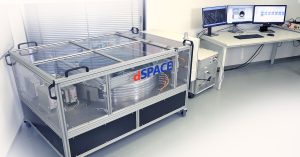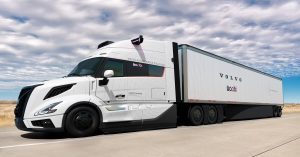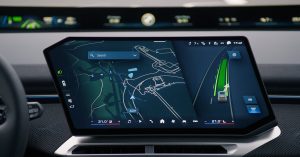Mercedes-Benz is set to make a significant leap in the realm of automated driving with the impending launch of its Drive Pilot system in the United States, slated to hit the market by the close of 2023. This cutting-edge technology will be introduced via a limited fleet of SAE Level 3-equipped Mercedes EQS electric sedans, aptly named the Drive Pilot: First Class edition. As the program unfolds, more EQS and S-Class sedan models are scheduled to join the fray in 2024. Initially, the system will be rolled out in the states of California and Nevada, both of which have granted regulatory approval and certification for its use on major freeways. Mercedes-Benz has expressed its intent to expand the technology’s availability to additional U.S. markets in the future.
Markus Schäfer, a member of the board of management of Mercedes-Benz Group AG and the company’s Chief Technology Officer for development and procurement, has emphasized the groundbreaking nature of the Drive Pilot system. He proudly proclaimed it as “the world’s first and only system for conditionally automated driving with internationally valid type approval.” One of its standout features is its robust system architecture, which incorporates redundancy with various sensor types. This redundancy, according to Schäfer, is a fundamental element for ensuring safe automated driving beyond Level 3, reflecting Mercedes-Benz’s unwavering commitment to safety as a core value.
The Drive Pilot system empowers the vehicle to assume control of the dynamic driving task on suitable freeway segments and in high traffic conditions, with speeds limited to 40 mph. Upon activation, the Drive Pilot takes charge of speed and distance, ensuring the vehicle stays within its lane. During conditionally automated journeys, certain applications that are typically restricted while driving become accessible via the integrated central display.
Safety takes precedence throughout the design and implementation of the system. It builds upon the existing vehicle sensing technology of Mercedes-Benz’s Driver Assistance Package, bolstered by additional sensors like lidar, a rear window camera, and microphones for detecting emergency vehicles. Notably, it incorporates a road wetness sensor in the wheel well. Furthermore, a vehicle equipped with a Drive Pilot boasts redundant steering and braking actuators, as well as a redundant onboard electrical system, ensuring maneuverability even in the event of a component failure.
Accuracy in determining the vehicle’s location is facilitated by a high-precision positioning system, surpassing conventional GPS capabilities. Mercedes-Benz attests to its precision, claiming it can pinpoint the vehicle’s position within inches. In addition to data collected by cameras and sensors, a digital HD map furnishes a three-dimensional representation of the road and its surroundings. This map encompasses details on road geometry, route characteristics, traffic signage, and special events such as accidents or construction zones. Each vehicle retains a copy of this map information onboard, constantly cross-referencing it with a central data center and updating the local dataset as needed.
Mercedes-Benz has gone a step further by introducing distinctive turquoise-colored Automated Driving Marker Lights, conforming to the SAE J3134 Recommended Practice. These lights serve to signify when the Drive Pilot system is actively engaged, even though there is currently no nationwide regulatory framework in the U.S. mandating their use.
Access to the Drive Pilot system will be offered on selected Mercedes-Benz models through the Mercedes Me Connect store, with prices commencing at $2,500. Dimitris Psillakis, President and CEO of Mercedes-Benz USA, hailed Drive Pilot as a “technological game changer” and a significant advancement in the pursuit of conditionally automated driving. He emphasized the company’s dedication to leading in safety and technology while affording customers valuable time-saving benefits, especially during heavy traffic situations.







